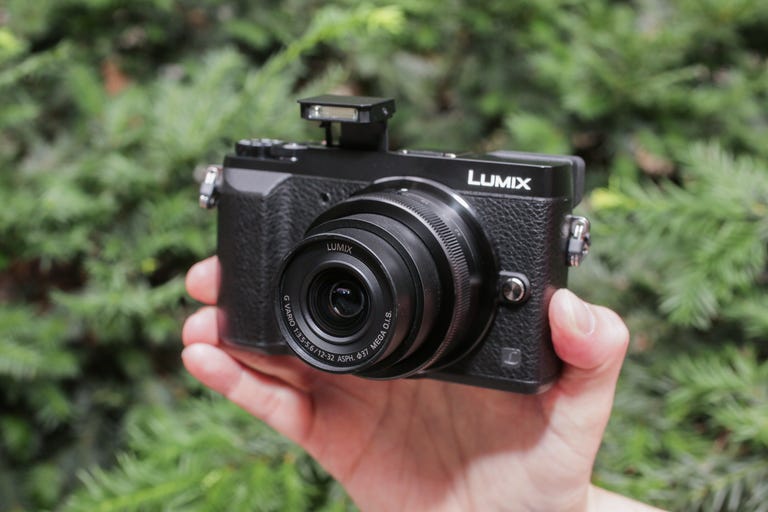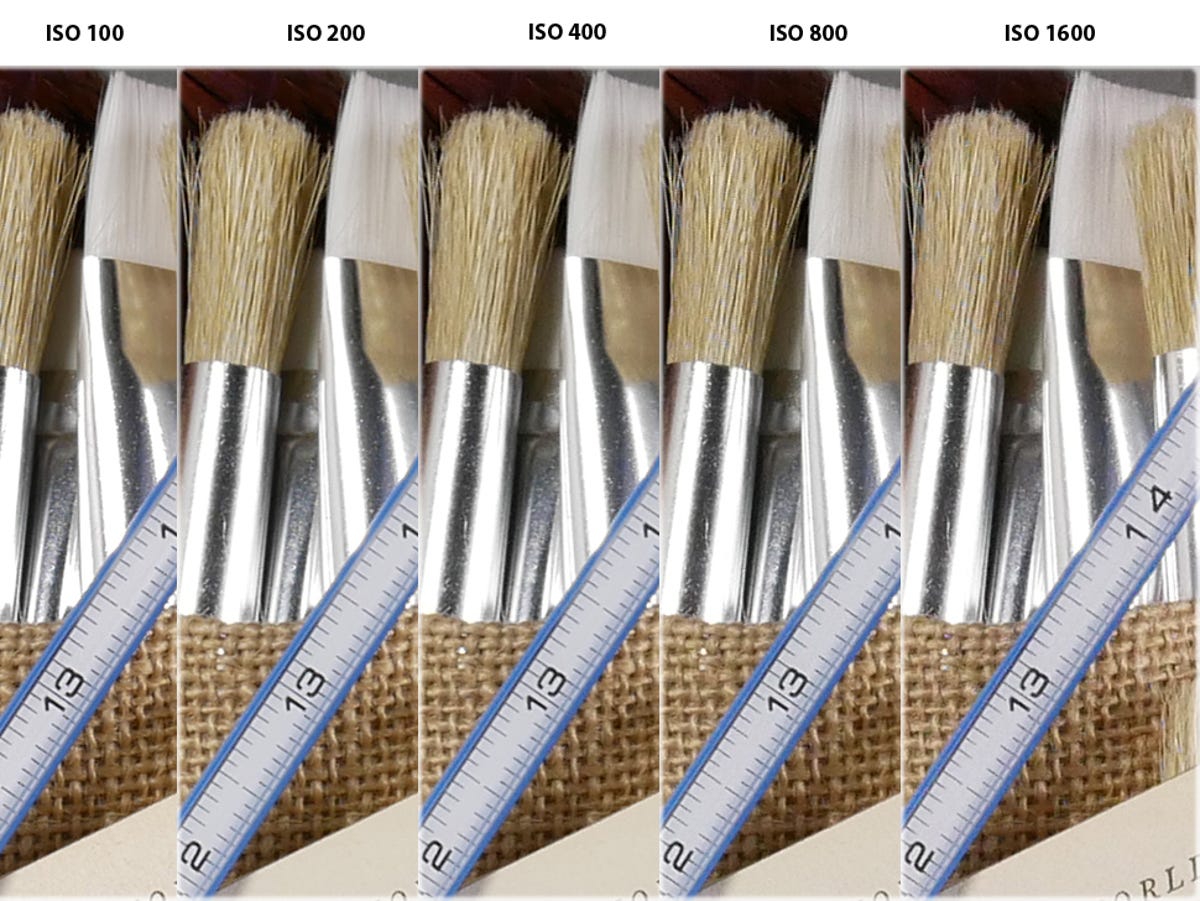 Why You Can Trust CNET
Why You Can Trust CNET Panasonic Lumix GX85 (GX80) review: The GX85 packs a lot of camera for the price
A good-sized camera with a great feature set, speed and quality that make it a nice alternative to a first dSLR.
There's a lot in the Lumix GX85 to appeal to family photographers and first-time mirrorless buyers as an alternative to a decent (as opposed to cheap) first dSLR like the Nikon D5500. It's got a great feature set, very good photo and video quality for its class, pretty fast performance, and an attractive, relatively compact design.
The Good
The Bad
The Bottom Line
With an electronic viewfinder, fast continuous shooting and 4K video, it fits right into that camera's demographic: an enthusiast-friendly model with a feature set that should also appeal to families and travelers at a reasonable price.
The kit with Panasonic's collapsible 12-32mm f3.5-5.6 (24-64mm equivalent) lens runs $800 and AU$1,200; in the UK, the model is the GX80, and costs £600 for the same kit. Like many Panasonic cameras, it's not available in the US as a body-only version, but you can get it that way in the UK and Australia for £510 and AU$1,100. And in the UK, you can get it in a dual-lens configuration with the 12-32mm and 35-100mm lenses for £730.
A sharper image
Although it's 16 megapixels rather than the new 20.3MP sensor that's in the higher-end GX8, it's a version of the Four Thirds-size sensor that forgoes an antialiasing filter (aka OLPF). Cameras use them to blur edges slightly, which removes some color artifacts (moire and false color) that would normally appear, but you sacrifice sharpness. The new version of the company's Venus image-processing engine which is in the GX85 has moire-reduction built in to compensate.
As a result, JPEGs remain clean through ISO 1600, and depending upon light and subject, usable through the top of the camera's ISO sensitivity range. It's noticeably better than the Olympus OM-D E-M10 Mark II in this respect. If you process raw files, you can eke out some more detail at all sensitivity levels; the default Standard Photo Style applied to JPEGs pushes the saturation and contrast enough that you'll lose some detail in highlight and shadow areas.
Its color rendering and white balance is excellent. The automatic white balance delivers some of the best results I've seen, even in cloudy weather, low light and multiple light sources, which are three of the trickiest conditions you'll encounter.
The video looks great, too, though because of the sensor you'll see moire on high-frequency patterns, which are surprisingly common on clothes. But even in high-contrast lighting (such a bright subway platform and dark track area) at midrange sensitivities, it does a good job.
Analysis samples
Because its sensor doesn't have an antialiasing filter, it can retain detail at higher ISO sensitivities better than a Four Thirds sensor with an AA filter. JPEGs look very clean through ISO 1600.
You can see a little more loss of detail in JPEGs at ISO 3200 (there's slight blurring in the white bristles), but it's still pretty good. Noise and artifacts become a lot more obvious at ISO 6400.
Overall, the GX85's colors look very good at the default settings, and it handles white balance extremely well even under cloudy conditions. It does push the contrast and saturation so you lose a little detail in highlights and shadows. It delivers almost perfectly neutral results in our lab tests, though.
You can regain some detail by processing raw at all ISO sensitivities, though the tradeoff is some grain.
Panasonic's DFD (Depth from Defocus) autofocus technology is generally fast and accurate, and that holds true in the GX85 for individual shots; it locks focus and shoots quickly enough for most uses in bright and dim light. Its tested continuous shooting rate of 6.6 frames per second with autofocus for more than 40 shots or raw or JPEG is better than average, and even sustains a solid burst with raw+JPEG.
However, the continuous-autofocus accuracy seemed hit-and-miss for burst shooting (it's fine in video). Most of the time it produced a reasonable number of in-focus shots, and like most systems, it would occasionally lose the tracking or focus on something other than the subject. But it also failed to focus on anything more frequently than I expected.
Overall, though, the continuous shooting performs well enough for the needs of enthusiasts. The hybrid sensor shift/optical image stabilization system also works well with the kit lens, as does the sensor-shift-only which you get with other lenses such as the fast Olympus primes I shot with.
The camera's biggest performance disappointment: battery life. Under typical circumstances, the remaining life would drop a lot after a few hours. Shooting 4K video and burst drains it even faster.
Shooting speed
- Shutter lag (typical)
- Shutter lag (dim light)
- Typical shot-to-shot time
- Raw shot-to-shot time
- Time to first shot
Continuous-shooting speed
Does it all
I like the GX85's design. The viewfinder's reasonably big and comfortable, it has a modest grip and a tilting touchscreen display and both front and back dials and direct access to most controls. You can customize the quick menu to bring up only the options you really use, and customize and save control mappings and settings separately for photos and videos.
However, I still haven't hit on the right combination of settings that will keep my cheek from changing the autofocus area when it hits the touchscreen (without giving up 1-area AF); I miss shots because of it, and it happens with every Panasonic touchscreen I use.
The GX85 is a good size if you're looking for a compact alternative to a dSLR.
It incorporates all the latest Panasonic features, including 4K burst modes (which shoots a 4K video at a high-ish shutter speed so you can extract individual frames) and post focus (which takes a 4K movie focused at multiple planes in the scene so that you can choose the one with the blurred areas you like best) as implemented in the ZS100 (aka TZ100 and TZ110).
The GX85 allows for password-free Wi-Fi connections to mobile devices in addition to all the other connection features the company's had for a while. Panasonic's wireless transfer and remote operation is quite robust.
Conclusion
If the autofocus were more consistent and the battery life longer -- both of which I suspect could be improved with a firmware update -- this would be a no-brainer recommendation over its sibling, the G7, which I like a lot. Even so, it's one of the better cameras in its price class, especially if you want the advantages a mirrorless confers over a similarly priced dSLR: it's smaller, as fast or faster, has a more advanced autofocus system and a boatload more features including 4K video.
Comparative specifications
| Olympus OM-D E-M10 Mark II | Fujifilm X-T10 | Panasonic Lumix DMC-G7 | "Pansonic Lumix DMC-GX85 DMC-GX80 (UK)" | |
| Sensor effective resolution | 16.1MP Live MOS | 16.3MP X-Trans CMOS II | 16MP Live MOS | 16MP Live MOS |
| Sensor size | 17.3mm x 13mm | 23.6 x 15.8mm | 17.3 x 13mm | 17.3mm x 13mm |
| Focal-length multiplier | 2.0x | 1.5x | 2.0x | 2.0x |
| OLPF | Yes | No | Yes | No |
| Sensitivity range | ISO 100 (exp)/ISO 200 - ISO 25600 | ISO 100 (exp)/200 - ISO 6400/51200 (exp) | ISO 100 (exp)/ISO 200 - ISO 25600 | ISO 100 (exp)/ISO 200 - ISO 25600 |
| Burst shooting | "4fps unlimited JPEG/raw (8.5fps with focus and exposure fixed on the first frame and no IS)" | "8fps 8 JPEG/n/a raw (unlimited JPEG at 3fps)" | "6fps 100 JPEG/13 raw (8fps with focus fixed on first frame; 40fps with electronic shutter)" | "6fps at least 100 JPEG/13 raw (10fps with electronic shutter and focus fixed on the first frame)" |
| "Viewfinder (mag/ effective mag)" | "EVF 2.36m dots 100% coverage 1.08-1.23x/0.59-0.63x" | "EVF 0.4-inch/10mm 2.4 million dots 100% coverage 0.93x/0.62x " | "OLED EVF 2.36m dots 100% coverage 1.4x/0.7x" | "EVF 2.8m dots 100% coverage 1.39x/0.7x" |
| Hot shoe | Yes | Yes | Yes | Yes |
| Autofocus | "81-area Contrast AF" | "77-point phase-detection AF 49-area Contrast AF" | "49-area DFD Contrast AF" | "49-area DFD Contrast AF" |
| AF sensitivity | n/a | n/a | -4 - 18 EV | -4 - 18 EV |
| Shutter speed | 60-1/4,000 sec. (1/16,000 sec. electronic shutter); bulb; 1/250 sec. x-sync (1/200 with external flash) | 30-1/4,000 sec.; bulb to 60 min; 1/180 x-sync (electronic shutter to 1/32,000 sec.) | 1/4,000 to 60 sec. (up to 1/16,000 with electronic shutter); bulb to 2 minutes; 1/160 sec. x-sync | 60 -1/4,000 sec.; max 1/16,000 sec. with electronic shutter; 1/160 sec. x-sync; bulb to 2 minutes |
| Metering | 324 area | 256 zones | 1,728 zone | 1,728 zone |
| Metering sensitivity | -2 - 20 EV | n/a | 0 - 18 EV | 0 - 18 EV |
| Best video | H.264 QuickTime MOV 1080/30p @ 77Mbps; 1080/60p @ 52Mbps | "H.264 QuickTime MOV 1080/60p" | "H.264 QuickTime MOV UHD/30p, 25p, 24p @ 100Mbps; 1080/60p, 50p, 25p, 24p @ 28Mbps " | "H.264 QuickTime MOV 4K UHD/30p, 25p, 24p @ 100Mbps; 1080/60p, 50p, 25p, 24p @ 200Mbps " |
| Audio | Stereo | Stereo | Stereo; mic input | Stereo |
| Manual aperture and shutter in video | Yes | Yes | Yes | Yes |
| Maximum best-quality recording time per clip | 29 minutes | 14 minutes | 29:59 minutes | 4GB/29:59 minutes |
| IS | "Sensor shift 5 axis" | Optical | Optical | "Hybrid optical, sensor shift 5 axis" |
| LCD | "3-inch/7.5cm Tilting touchscreen 1.04m dots" | "3 in./7.5 cm Tilting 920,000 dots" | "3 in./7.5cm Articulated touchscreen 1.04m dots" | "3-inch/7.5 cm Tilting touchscreen 1.04 million dots" |
| Memory slots | 1 x SDXC | 1 x SDXC | 1 x SDXC | 1 x SDXC |
| Wireless connection | Wi-Fi | Wi-Fi | Wi-Fi | Wi-Fi |
| Flash | Yes | Yes | Yes | Yes |
| Wireless flash | Yes | Yes | No | Yes |
| Battery life (CIPA rating) | "320 shots (1,175 mAh)" | "350 shots (1,120 mAh)" | "360 shots (1,200 mAh)" | "290 shots (LCD); 270 shots (EVF) (1,025 mAh)" |
| Size (WHD) | "4.7x3.3x1.8 in. 120x83x47mm" | "4.7 x 3.3 x 1.6 in. 118.4 x 82.8 x 40.8 mm" | "4.9 x 3.4 x 3.1 in. 124.9 x 86.2 x 77.4 mm" | "4.8 x 2.8 x 1.7 in. 122 x 71 x 44 mm" |
| Body operating weight | "14.1 oz. 400 g" | "13.4 oz. (est.) 381 g (est.)" | "14.7 oz. 418 g" | "15.3 oz. 434 g" |
| Primary kit | "$700 £550 AU$1,000 (est.) (with 14-42mm EZ lens)" | "$900 (est.) £550 (est.) (with 16-50mm lens) AU$1,300 (est.) (with 18-55mm lens)" | "$700 £500 (est.) £550 (with 12-60mm lens) £490 (est.) AU$900 (with 14-42mm lens)" | "$800 £600 AU$1,200 (with 12-32mm lens)" |
| Release date | September 2015 | June 2015 | June 2015 | May 2016 |



